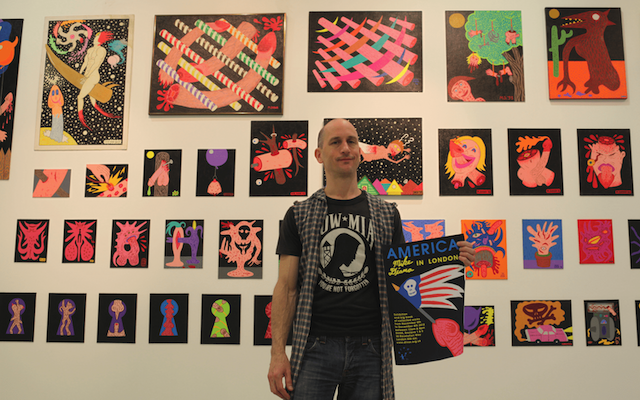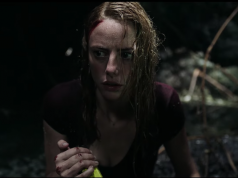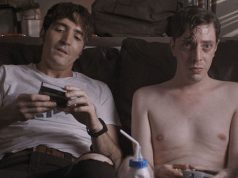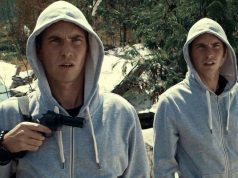
Owing to the slippery definition of the word and our robust (for the time being) First Amendment, it takes a lot to get arrested for “obscenity” in America, let alone actually convicted. A few performers and publishers have been, with famous names like Lenny Bruce and Mae West, but the only artist ever convicted on obscenity charges for his drawings is … Mike Diana.
Not exactly a household name — and to the extent that he is famous, it’s only because of the 1994 Florida case that exposed his work to thousands more people than ever would have seen it otherwise. They call that the “Streisand effect,” though I don’t think Streisand ever drew highly detailed pictures of grotesque demon penises (correct me if I’m wrong).
“Boiled Angels: The Trial of Mike Diana” tells the frustrating, baffling, incredible-but-true story, directed by sexploitation auteur Frank Henenlotter (“Basket Case,” “Brain Damage,” “Frankenhooker”) with an attitude of good-humored punk energy. He got participation from Diana himself, as well as his parents and siblings, his lawyer, the state attorneys who prosecuted the case, a reporter who covered it, and even one of the religious protesters who aggressively prayed for Diana outside the courtroom at the time.
Mike Diana was born in 1969 in New York, but his family moved to Florida when he was 8. As he puts it, “I feel like I never really adjusted to life in Florida.” Teachers there in the late ’70s had paddles for disciplining children, and the Catholic church his family attended was more fire-and-brimstone than the one back in New York. Young Mike, a quiet, happy, sensitive boy who liked to draw, watched all the gory movies he could get his hands on and started making his own when he was a teenager. All of this, he says, not any kind of trauma or abuse, is what led to his penchant for drawing comics that were, uh, extreme.
It was two issues of his self-published underground comic Boiled Angel that got Mike Diana in trouble with the law when he was a long-haired, baby-faced 24-year-old. The stories in these comics were darkly funny (sometimes just dark), frequently dealing with monstrous sexual abuse and torture, often involving children. Henenlotter shows us plenty of samples from the issues in question, the dialogue acted out in voice-over by Diana and Henenlotter, the perverse drawings larger than life.
Diana’s style was influenced by the underground comics — “comix” — of the ’70s and ’80s, a brief history of which is given by Henenlotter. (He actually takes it back even further, to the E.C. Comics congressional hearings of the early ’50s and the rise of the “Comics Code” to combat juvenile delinquency — a good, informative primer.) Anyway, you’ve seen Diana’s type of work before, maybe on the covers of thrash-metal albums in the ’80s. Lots of flayed flesh, blasphemous images, sexual deviancy, and the like. The style is elaborate, meticulously drawn, but extremely cartoonish, not at all realistic.
This was the era of underground “zines,” self-published, photocopied mini-mags. Diana’s comix were distributed underground, not from store shelves; he never printed more than 300 copies of anything. Nobody ever really “stumbled” across it. As his lawyer observes in the film, the only people who ever had it forced upon them were the jurors.
Supported by interviews with First Amendment activists, comic historians, and celebrity observers like Neil Gaiman, Henenlotter breezily tells the story of Diana’s arrest and trial, which is full of fascinating complications that I won’t spoil for you. The state’s case rested on Diana’s work meeting the Supreme Court’s three-pronged litmus test for whether something is “obscene” (and thus not protected by the First Amendment): it would be offensive to the average reasonable person; it appeals only to a prurient interest; and it’s devoid of any artistic or social merit. The last one is the sticking point, and why it’s usually so difficult to get a conviction. You might hate it, it might not even be well done, but does that mean it doesn’t even qualify as “art”?
I think the film goes too far in its implication that “Won’t someone think of the children??” objections are always misguided or laughable. Concerns about 1950s horror comics turning kids into juvenile delinquents were overblown, and the fear that Mike Diana’s work indicated he was a budding serial killer proved unfounded (so far) — but it’s absurd to suggest that graphic media has no potential to harm impressionable readers, or that psychopaths don’t sometimes reveal themselves ahead of time. There’s a middle ground that this particular doc, colorful and entertaining though it is, isn’t inclined to explore. What it does do, though, it does with great showmanship and flair.
B+ (1 hr., 45 min.; )





